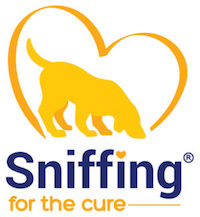Breast cancer represents the most prevalent cancer and the leading cause of cancer death in women worldwide. Despite significant progress in breast cancer treatment, the prognosis of metastatic breast cancer remains poor. Metastatic cancer refers to when the tumor has spread to other parts of the body. The 5-year survival for patients that have a small breast tumor is about 97%. Conversely, if breast cancer has spread to other parts of the body (known as stage IV), the 5-year survival is only 25%.
In dogs, the term canine mammary cancer corresponds to breast cancer in a human. As in women, mammary cancer (breast cancer) is among the most frequent tumors in female dogs. Although the prevalence of canine mammary cancer is lower in regions where preventive removal of the ovaries is performed, canine mammary cancers remain the most common canine cancer, with an estimated annual incidence of 182 per 100,000 female dogs. Poodles, dachshunds, and spaniels are most affected, and obesity at a young age is a risk factor.
The clinical and molecular similarities between canine mammary tumors and human breast cancer are very remarkable. For example, the tumors occur spontaneously in both humans and dogs. In females, breast cancer development is affected by estrogen; similarly, in non-spayed female dogs. Despite having different lifespans, the average age at onset of mammary tumors is approximately the same for humans (after 40 years) and dogs (after six years). Also, the reported peak incidence of the disease is also comparable between the humans (50-58 years-old) and dogs (8-11 years-old).
The clinical course of canine mammary tumors in dogs is comparable to human breast cancer. In dogs, the proportion of malignant tumors is about 50% , and approximately 50% of mammary carcinomas spread (metastasize) to regional lymph nodes and lungs. In the human counterpart, nearly 20% of women with a history of early breast cancer will eventually develop metastases.
In both species, humans, and dogs, a larger tumor size, spread of the tumor to the lymph nodes are associated with a worse prognosis. The smaller the mass is at the time of surgery the less likely it will recur or spread elsewhere. Therefore, it is best to bring your dog to the veterinarian as soon as you find it.
There are few things you can do to prevent mammary cancer in your dog. Mammary tumors can be prevented by spaying your dog before six months of age or before your pet’s first heat cycle. Additionally, feeding a well-balanced diet, avoiding obesity and the administration of hormones (especially progesterone or mixed estrogen-progesterone drugs) may reduce the incidence of mammary tumors.
The accumulating similarities between canine mammary tumors and human breast cancer reinforce that we can learn from mammary tumors and help both species, dogs and humans. It remains for us to work together to promote earlier detection and complete molecular understanding of breast cancer, and for the development of improved therapeutic strategies for both dogs and humans.






1 Comment
Happy-Go-Doodle
November 9, 2018 at 8:08 pmThank you for bringing to light the similarities between cancer in pets and in people. Your blog is thoughtful and inspiring.